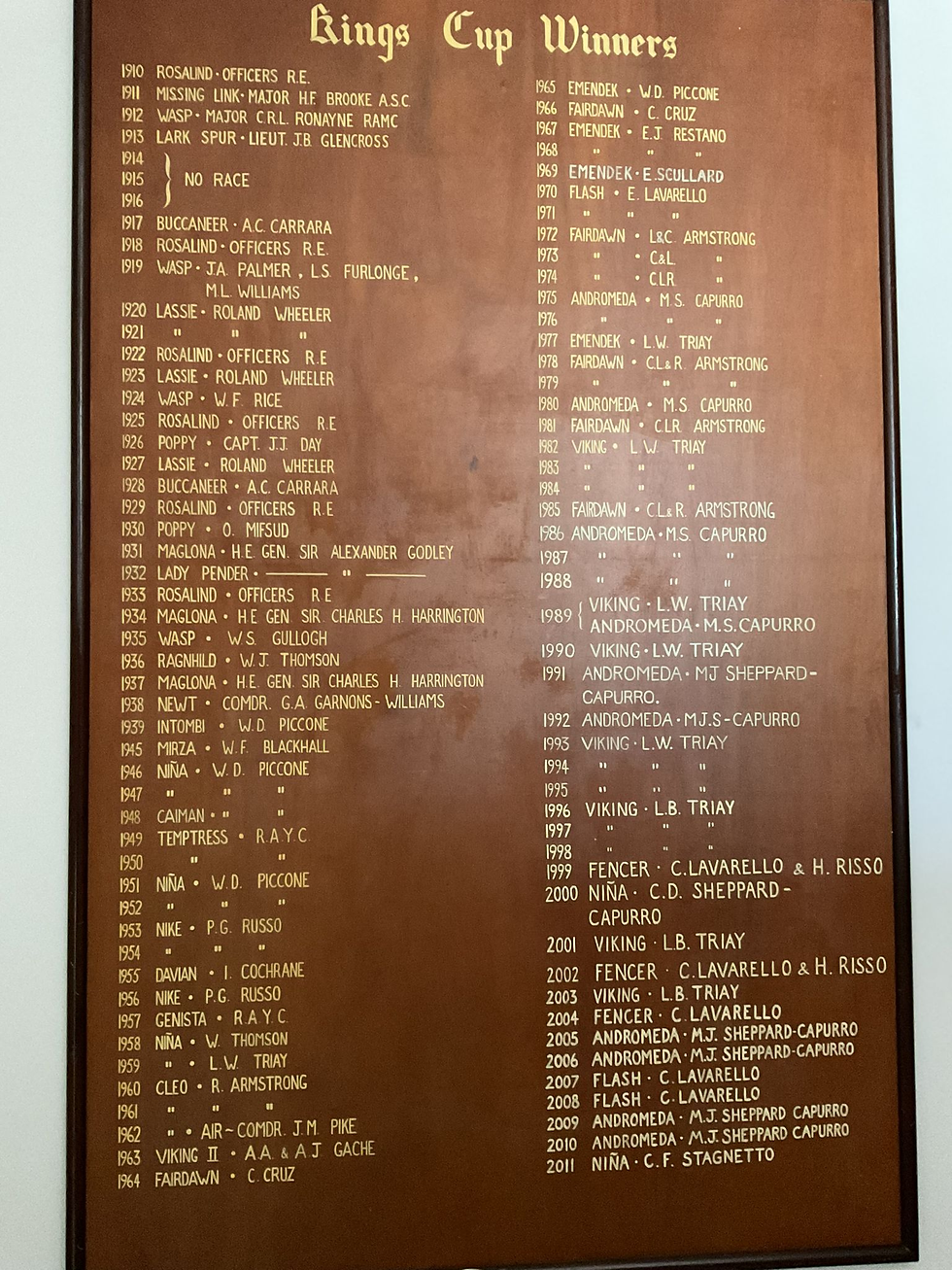The Navy Connection
- Ciara Nic Liam
- Dec 9, 2024
- 2 min read

The document outlines the Navy's strong historical connection to the Victory class of sailboats, developed in Portsmouth in the 1930s. Below is a summary of the key points:
1934 Background: Sailing in Portsmouth was limited compared to other regions, prompting 40 yachtsmen to meet at the George Hotel in Portsmouth to form the Portsmouth Harbour Racing and Sailing Association (PHRSA).
Vision and Purpose: Spearheaded by retired naval officer J.G. Kimber, the association aimed to promote racing and address local sailing issues, including mooring shortages and the introduction of a one-design class.
Origin of the Design: The Victory Class boats were based on a 1904 Bembridge Sailing Club one-design, originally created by Alfred Westmacott. The design was chosen for its affordability and suitability for Solent conditions.
Transition to Portsmouth: By the 1930s, Bembridge’s fleet was replaced, and some boats were acquired by naval establishments in Portsmouth, laying the foundation for the Victory Class.
Naval Influence: The Navy played a pivotal role in the class's establishment. Commander H.M. Denham, Executive Officer at HMS Dolphin, became the first class captain, overseeing the construction and organization of the boats.
Technical Development: Sidney Graham, a naval architect, and naval shipwrights were instrumental in adapting and standardizing the boats' design. Charles Nicholson designed the new rig, ensuring a modern racing standard.
Inaugural Race: The Victory Class had its first race on June 2, 1934, featuring two newly-built boats and five older Bembridge boats, with naval officers heavily participating.
Competitive Spirit: The boats provided a balance of safety, performance, and affordability, appealing to both Navy personnel and civilian sailors.
Class Expansion: The fleet grew rapidly from seven boats to fourteen by the end of 1934, with strong naval involvement. Several naval bases owned and raced boats, reinforcing the military connection.
Naval Personalities: Prominent Navy figures like Commander Denham, Lieutenant Sam Woodcock, and Rear-Admiral R.R. Turner were key contributors to the class's early success.
Sam Woodcock’s Legacy: Lieutenant Woodcock achieved unparalleled success in 1937, dominating the class before his untimely death in WWII. His boat, Z35 Surprise, was later donated to the RNSA.
Naval Adaptability: Racing schedules accommodated naval officers' duty times, and naval craftsmanship was integral to boat construction and maintenance.
Social and Sporting Impact: The association hosted successful regattas and passage races, fostering camaraderie among sailors, both military and civilian.
Wartime Pause: WWII temporarily halted racing, but the class survived due to the foundational work and commitment of its members.
Long-lasting Connection: The Victory Class's origins and growth are inextricably tied to naval support, showcasing the Navy's enduring influence on the local sailing community.




Comments